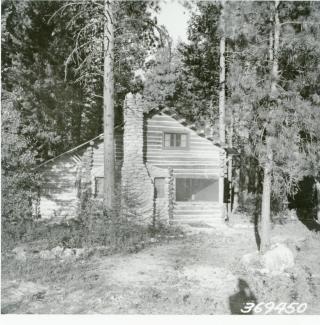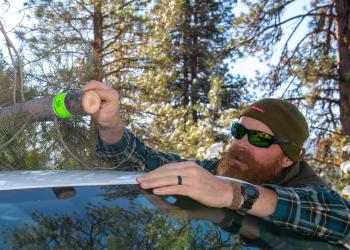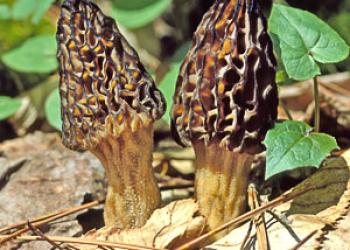Permits
Permits for events such as weddings, family reunions (outside of developed recreation sites), sporting events, festivals and such are required. In addition, commercial activities such as outfitter and guide services, are required to obtain a special use permit.
What are Non-Commercial Group Use Events?
Permits are required for groups of 75 people or more, such as weddings, family reunions, large social gatherings, etc., excluding group sites in designated campgrounds. Please apply using the FS-2700-3b application. Non-commercial group use is not applicable within Wilderness. Applications should be received by the District Office a minimum of 45 days in advance.
What are Recreation Events?
Recreation events are commercial activities requiring temporary special use authorizations for use of National Forest System lands. Examples of recreation events include, but are not limited to, animal, bicycle, motocross, or triathlon type races; jeep rallies; dog trials; fishing contests; rendezvous; rodeos; adventure games; youth treks; wagon trains; concerts; and other similar events. A permit is required for these types of events regardless of the number of people involved in the activity.
What are Outfitter and Guides?
There are many types of outfitted and guided services provided on National Forest System lands. The traditional types primarily involve hunting and fishing in a backcountry setting, but today the industry is highly diverse and includes whitewater floating and jetboating, backpacking, mountaineering, snowmobiling, cross-country skiing, mountain biking, van touring, and dog sledding. Nonprofits and educational groups, such as schools and universities, are also frequently considered outfitters, as are those who use the National Forests for rehabilitation and therapeutic benefits.
How do I apply?
Please contact the appropriate Ranger District Office for more information on recreation special uses. We know that you don't want to plan an event, only to find out at the last minute a permit is needed. If you are in doubt about the need for a permit, or have questions about the permitting process, please give us a call!
A pre-application meeting with the permit administrator is required to ensure the proposal is an appropriate and authorized use on NFS lands. If the request is eligible for consideration, the application and supporting documentation must be received by the applicable open season deadline. Visit the Forest Service Special Uses Forms website. The permit administrator can verify if your application is complete. An incomplete application will delay review of your proposal.
A Special Use Permit grants rights or privileges of occupancy and use subject to specified terms and conditions on National Forest System land. Lands Special Use Permits cover a variety of uses but the most common on the Boise National Forest are Communication Sites, Roads, Waterlines, Powerlines, Research, and Commercial Photography/Filming. Other land use permits include, but not limited to, service buildings, stockpile sites, warehouse and storage yards, signs, dams, hydroelectric, and parking lots.
Do I need a Lands Special Use Permit?
You need a permit if:
- If you will need to occupy, use or build on Forest Service land for personal or business purposes, whether the duration is temporary or long term.
- If there is a fee being charged or if income is derived from the use.
How do I apply?
Please contact the appropriate District Ranger Officer for more information on lands special uses.
A pre-application meeting with the permit administrator is required to ensure the proposal is an appropriate and authorized use on NFS lands. If the request is eligible for consideration, the application and supporting documentation must be received by the applicable open season deadline. Proposals should be submitted using the SF-299 form. The permit administrator can verify if your application is complete. An incomplete application will delay review of your proposal.
Broadband
The Forest Service has developed an online portal for submission of fiber optic cable proposals and created a National Broadband Program that includes a national project manager and broadband action teams.
The broadband action teams will:
- Review broadband proposals and applications and will assist Forest Service offices with the environmental review and permitting processes.
- Coordinate with state broadband offices to provide direction, training and support to broadband applicants.
The streamlined process will ensure the Forest Service receives all relevant information needed to screen and process proposals.
Open Season
To promote consistency and the timely review of proposals, the Boise National Forest has implemented an Open Season. Applications are accepted only during the designated open season for all special use proposals. Excepting emergencies, we will not accept applications outside of the open season.
- Recreation events and temporary outfitter & guide proposals:
- For summer/fall events or operations (occurring May 1 - October 31), applications are accepted between November 1 – February 15.
- For winter/spring events or operations (occurring November 1- April 30), applications are accepted between August 1 – September 15.
- Commercial filming proposals must be submitted at least 30 days in advance of the proposed filming.
- Recreation residences: applications are accepted July 1 - July 31.
- All other lands/recreation uses: applications are accepted May 1 - June 31.
How long does it take to get a proposal processed?
This can vary from a couple of days to years. Your proposal will be screened within 60 days. The processing time after screening varies with the complexity of the proposal and type of use.
What form do I use to submit my proposal?
This varies depending on the type of use proposed. Visit the Special Uses Permits website to view the different application forms.
What is the Initial and Second Level Screening Criteria?
A list of these criteria can be found at the Special Uses Permits website. This is the basic criteria used by the agency to review proposals and applies to all lands special uses proposals.
I/We have an existing permit. I/We wish to make a change/addition to our use. Is the process the same?
Yes. Submit a new SF-299 form found at the Special Uses Permits website. describing changes to the existing permitted use.
What are the fees to apply for a permit?
There is no fee to have your proposal go through the first level of screening by the Forest Service. If your proposal is accepted, then processing and monitoring fees follow these procedures:
- Processing: All lands special use proposals have a processing fee once accepted which covers the environmental review and permit preparation. This will vary based on the complexity of the proposal.
- Monitoring: If a proposal is approved and the project requires government oversight beyond routine permit inspections, such as construction of a new facility, the proponent will be required to pay a monitoring fee. This will vary depending on the complexity of the proposal.
I bought property that has a special use permit tied to it with the Boise National Forest (for example private road access or water system). How would I get authorization for this use to continue under my name?
Contact the appropriate Ranger District Office. The process starts by completing a form called “Holder Initiated Revocation of Existing Authorization, Request for a Special Use Permit” which is form number FS-2700-3a, found at the Special Uses Permits website. You would also need to provide a bill of sale or other documentation verifying the transfer of ownership.
Who can I contact regarding Special Uses Permit?
Please contact the Ranger District Offices for further information about special use permits.
What Is a Recreation Residence?
Recreation residences, sometimes called “summer homes,” are privately owned structures on National Forest System lands that are occupied and maintained under the terms of a special use authorization (i.e. “permit”). They generally consist of one cabin and associated outbuildings such as a garage, shed, and outhouse. The permittee owns the improvements but not the land, and pays an annual rental fee based on fair market value of only the land, as determined by an appraisal. Cabins are typically grouped into tracts.

A typical recreation residence on the Boise National Forest, Idaho City Ranger District, 1938
Quick Facts
There are nearly 14,000 recreation residences on National Forest System Lands throughout the country.
There are about 120 recreation residences on the Boise National Forest. Over half of those permits are on Warm Lake.
Maintenance, Repairs, New Construction, or Reconstruction
Permit holders are required to keep their cabins maintained and comply with the terms and conditions of their permits.
The terms of the permit (FS-2700-5a) stipulate that:
All plans and revisions to plans for development, layout, construction, reconstruction or alteration of improvements on the authorized lot must be prepared by a licensed engineer, architect, or landscape architect, in those states in which such licensing is required, or other qualified individual acceptable to the authorized officer. These plans and revisions to these plans must be approved by the authorized officer before commencement of any work.
Holders should use the Boise National Forest Project Proposal Form to submit proposals for maintenance, repairs, and other projects.
Recreation Residences as Historic Properties
In 1891 Congress empowered the President to withdraw forested land from the public domain. The General Land Office (GLO) managed these lands as forest reserves until the Forest Service was established in 1905. The GLO issued permits authorizing a broad range of activities in the reserves, including the establishment and occupancy of “summer residences.” The Forest Service continued GLO policy for managing the reserves, which were renamed national forests in 1907.
Recreation residences are important reminders of a unique era in Forest Service history. Prior to World War II, the Forest Service viewed recreation on the national forests as an activity best served through permitted, privately operated enterprises. In the 1930s however, the Forest Service shifted its focus to agency development of recreational opportunities that served wider public interests. By the 1950s, the Forest Service no longer promoted the establishment of new recreation residences. In 1976, the Forest Service discontinued authorization of new recreation residence tracts and lots in national forests.
Recreation residences may be eligible for listing on the National Register of Historic Places if they meet one or more criteria and retain certain aspects of integrity.
For more information about recreation residences and how they’re managed as historic properties:
Review Where To Find Information About Your Historic Buildings for more information about recreation residences and how they’re managed as historic properties. This site was prepared for Recreation Residence Permit Holders on the Boise National Forest.
Sale of a Cabin
Permit holders who wish to sell their improvements must contact your District Special Use Administrator. The process starts by completing a form called “Holder Initiated Revocation of Existing Authorization, Request for a Special Use Permit” which is form number FS-2700-3a, found here. You would also need to provide a bill of sale or other documentation verifying the transfer of ownership
Note: In 2024, the Transfer Fee was $1,464.00, however the fee increases annually based on an index, so contact the District special use permit administrator for the current fee.
Additional Information
- National Forest Service Special Uses website to learn more about CUFFA (Cabin Users Fee Fairness Act), Cost Recovery, the national program, regulations, and other related information.
- National Forest Homeowners (external site) To learn about the member-directed organization representing cabin-owner recreation residence permittees on national forests.
Fuelwood and Christmas Tree Permits

Mushroom Picking Permits



